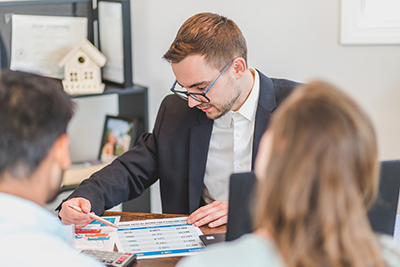Nowadays, every builder should address the issue of energy-efficient construction. What exactly goes into an energy-self-sufficient house is revealed by independent energy and building consultants. In order to build energy-efficiently, builders are advised to opt for a compact building form with the smallest possible building surface. Solid houses in particular offer good thermal insulation.
This is because a solid house already meets the prescribed standards of the Energy Saving Ordinance (EnEv) without additional insulation. If the house has bay windows, dormers or other projecting building parts, these must be additionally insulated. When installing balconies, heaters or other elements in the masonry, care must also be taken to ensure that the house is airtight and has no thermal bridges or joints.
With a north-south orientation of the house, a maximum yield of solar energy can be achieved when installing a photovoltaic system. Living and recreation rooms should be located in a southern position and rooms that are not regularly used in a northern position. In this way, residents can save energy on the one hand, and on the other hand, the recreation rooms receive sufficient sunlight and ensure a pleasant living climate. Which type of heating is the right one depends on the characteristics of the property and must be evaluated individually. Likewise, for example, outdated technical equipment should be replaced, lamps should be changed to energy-saving LED lights, or programmable thermostats should be used.
Source: Hauberater.de
© photodune.net



